
Majestic Faces of History: Mount Rushmore National Memorial
Explore Mount Rushmore National Memorial: A timeless tribute to America's founding fathers, set amidst the stunning Black Hills of South Dakota.
Nestled in the Black Hills of South Dakota, Mount Rushmore National Memorial stands as a monumental tribute to four of America's most iconic presidents - George Washington, Thomas Jefferson, Theodore Roosevelt, and Abraham Lincoln. Carved into the granite face of the mountain, this colossal sculpture is an awe-inspiring sight, representing the birth, growth, development, and preservation of the United States. The memorial attracts millions of visitors each year who come to marvel at its grandeur and reflect on the historical significance of these great leaders. The visitor experience at Mount Rushmore goes beyond just the sculpture. The site offers a variety of activities and facilities, including the Lincoln Borglum Visitor Center, which features exhibits and a 14-minute film detailing the history and construction of the monument. Visitors can also enjoy the Presidential Trail, a half-mile walking path that provides closer views of the carvings and leads through the scenic forested area around the memorial. For an even more memorable visit, plan to attend the evening lighting ceremony, held from late May through September. This stirring event includes a ranger talk, a film about the presidents, and the illumination of the faces against the night sky. The memorial also hosts numerous special events throughout the year, including educational programs, cultural celebrations, and patriotic performances.
Local tips in Mount Rushmore National Memorial
- Visit early in the morning or late afternoon to avoid crowds and enjoy better lighting for photos.
- Bring comfortable walking shoes for exploring the Presidential Trail and other hiking paths.
- Check the schedule for the evening lighting ceremony and plan to attend for a memorable experience.
- Pack a picnic and enjoy a meal at one of the designated picnic areas with views of the memorial.
- Don't miss the Sculptor's Studio for a deeper understanding of the carving process and Gutzon Borglum's vision.
Majestic Faces of History: Mount Rushmore National Memorial
Nestled in the Black Hills of South Dakota, Mount Rushmore National Memorial stands as a monumental tribute to four of America's most iconic presidents - George Washington, Thomas Jefferson, Theodore Roosevelt, and Abraham Lincoln. Carved into the granite face of the mountain, this colossal sculpture is an awe-inspiring sight, representing the birth, growth, development, and preservation of the United States. The memorial attracts millions of visitors each year who come to marvel at its grandeur and reflect on the historical significance of these great leaders. The visitor experience at Mount Rushmore goes beyond just the sculpture. The site offers a variety of activities and facilities, including the Lincoln Borglum Visitor Center, which features exhibits and a 14-minute film detailing the history and construction of the monument. Visitors can also enjoy the Presidential Trail, a half-mile walking path that provides closer views of the carvings and leads through the scenic forested area around the memorial. For an even more memorable visit, plan to attend the evening lighting ceremony, held from late May through September. This stirring event includes a ranger talk, a film about the presidents, and the illumination of the faces against the night sky. The memorial also hosts numerous special events throughout the year, including educational programs, cultural celebrations, and patriotic performances.
When is the best time to go to Mount Rushmore National Memorial?
Iconic landmarks you can’t miss
Jewel Cave National Monument
Unveil the hidden wonders of Jewel Cave National Monument, a captivating natural reserve in South Dakota with stunning formations and endless adventures.
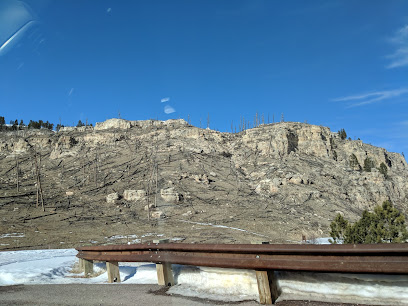
Norbeck Overlook
Discover the breathtaking vistas of Norbeck Overlook, where stunning views of Mount Rushmore await in the heart of South Dakota's Black Hills.
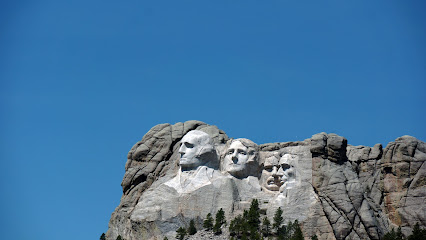
Geographic Center of the Nation Monument
Visit the Geographic Center of the Nation Monument in Belle Fourche, SD, and explore the heart of the United States with its rich history and scenic beauty.
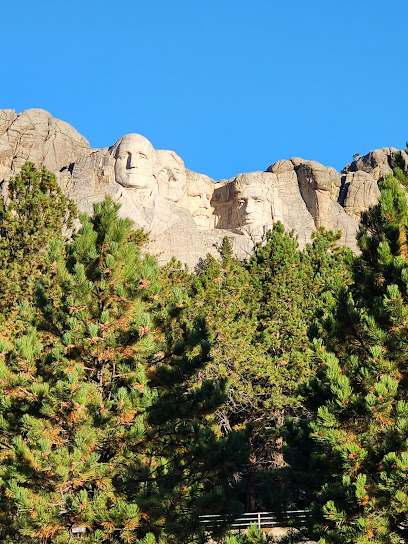
The National Presidential Wax Museum
Explore American history at The National Presidential Wax Museum in Keystone, South Dakota, featuring lifelike wax figures of U.S. presidents and key historical figures.
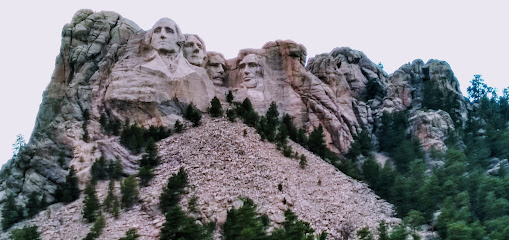
Mt Rushmore
Experience the grandeur of Mt. Rushmore, where history meets artistry in the heart of South Dakota's Black Hills.
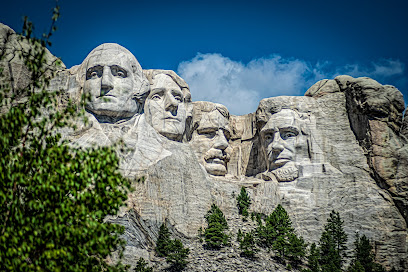
Doane Robinson Tunnel (Tunnel view of Mount Rushmore)
Discover the stunning views of Mount Rushmore at Doane Robinson Tunnel, a historical landmark blending natural beauty with rich American heritage.
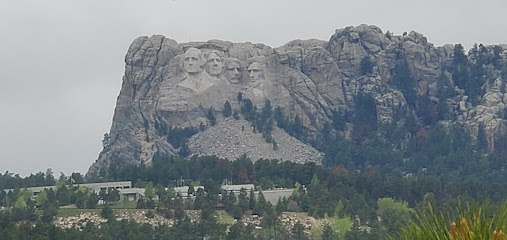
Gordon Stockade Historical Landmark
Uncover the rich history and natural beauty of Gordon Stockade, a must-visit historical landmark and state park in Custer, South Dakota.
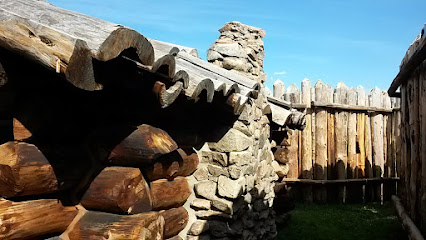
Hall of Records
Explore the Hall of Records in South Dakota, a historic landmark showcasing Mount Rushmore's stunning artistry and the spirit of American democracy.
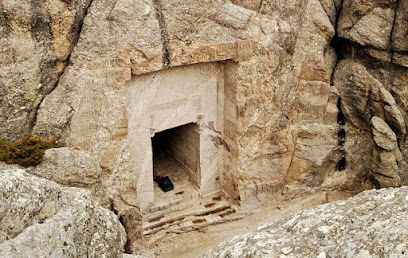
Mount Rushmore Inspiration
Discover the iconic Mount Rushmore Inspiration, a historical landmark showcasing the impressive faces of four U.S. Presidents carved into granite.
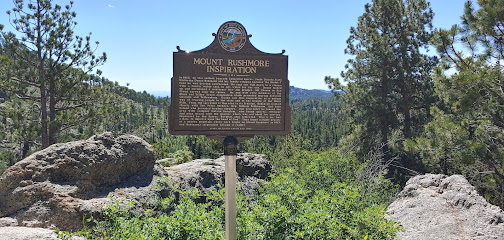
Unmissable attractions to see
Badlands National Park
Experience the stunning landscapes and rich wildlife of Badlands National Park, a must-visit natural gem in South Dakota.
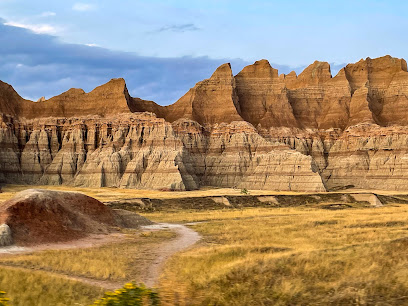
Cosmos Mystery Area
Discover the enchanting illusions and captivating experiences at Cosmos Mystery Area in Rapid City, South Dakota, where reality meets the extraordinary.

Doane Robinson Tunnel (Tunnel view of Mount Rushmore)
Experience the Doane Robinson Tunnel, a historical gem offering unparalleled views of Mount Rushmore amidst the stunning Black Hills of South Dakota.
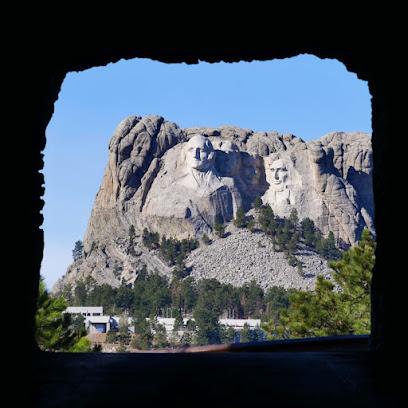
Lincoln Borglum Visitor Center
Explore the Lincoln Borglum Visitor Center, your gateway to Mount Rushmore's history and the breathtaking Black Hills of South Dakota.
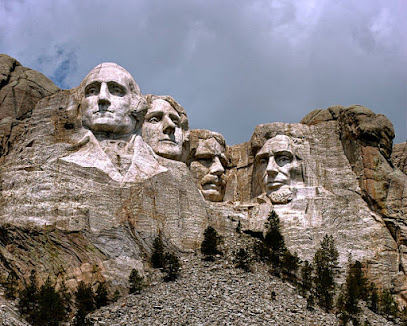
Doane Robinson Tunnel (Tunnel view of Mount Rushmore)
Experience the breathtaking views and rich history of the Doane Robinson Tunnel, a unique vantage point for Mount Rushmore in South Dakota.
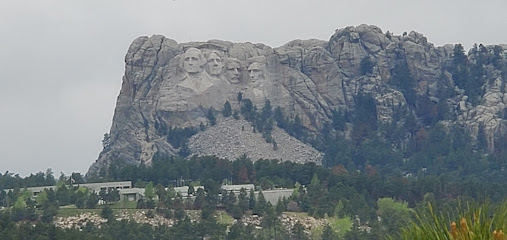
Sculptor's Studio
Explore Gutzon Borglum's artistic journey at the Sculptor's Studio, a unique sculpture museum near Mount Rushmore, South Dakota.

Black Hills Playhouse
Experience the magic of live theater in the scenic Black Hills at the Black Hills Playhouse, where local talent shines in captivating performances.
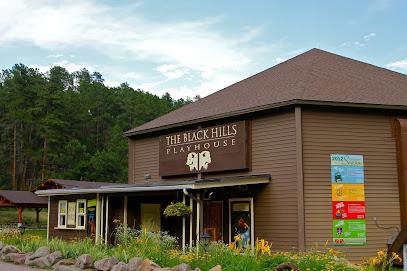
Scovel Johnson Tunnel
Explore Scovel Johnson Tunnel, a historical landmark in Keystone, SD, blending stunning scenery with rich cultural heritage.

Gordon Stockade Historical Landmark
Explore the historic Gordon Stockade in Custer, SD, a captivating landmark surrounded by stunning natural beauty and rich frontier history.
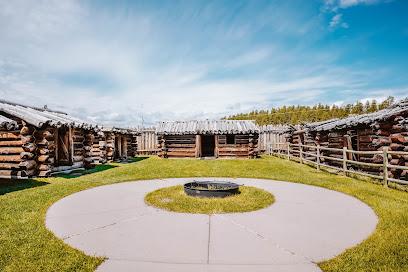
Sheep Mountain Overlook
Experience the breathtaking views at Sheep Mountain Overlook, a scenic spot within Badlands National Park, perfect for photography and nature lovers.
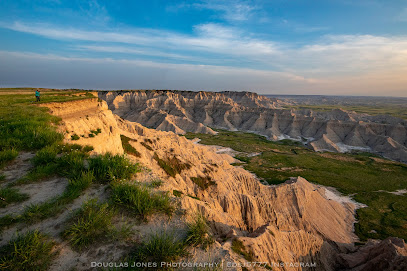
Hall of Records
Explore the Hall of Records in Keystone, SD, a stunning historical landmark showcasing America's rich heritage and breathtaking architecture.
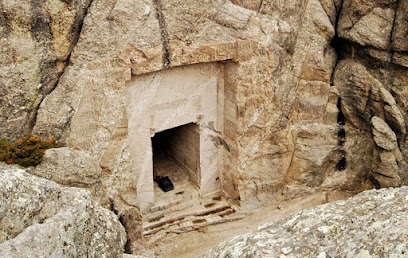
Essential places to dine
Powder House
Discover comfort and culinary delights at Powder House Lodge near Mount Rushmore – an ideal retreat for every traveler.

Mount Rushmore KOA Resort at Palmer Gulch Resort
Discover adventure and relaxation at Mount Rushmore KOA Resort - your gateway to South Dakota's breathtaking Black Hills.
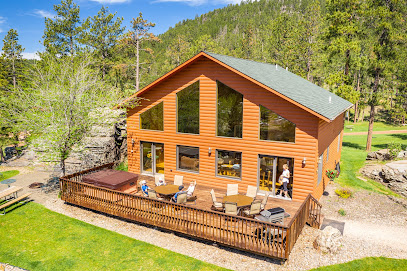
Peggy's Place
Experience family-friendly dining at Peggy's Place in Keystone, SD – where comfort food meets warm hospitality.
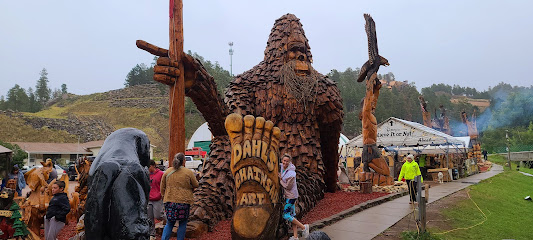
Baymont by Wyndham Keystone Near Mt. Rushmore
Experience comfort and convenience at Baymont by Wyndham Keystone, your ideal base near Mt. Rushmore and Black Hills adventures.

Ramada by Wyndham Keystone Near Mt Rushmore
Experience comfort and convenience at Ramada by Wyndham Keystone near Mount Rushmore, your gateway to unforgettable adventures in South Dakota.
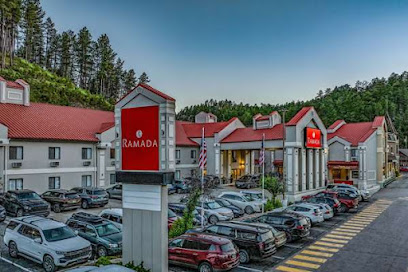
Holiday Inn Express & Suites Mt Rushmore/Keystone, an IHG Hotel
Experience comfort and convenience at Holiday Inn Express & Suites Mt Rushmore/Keystone - your ideal base for exploring South Dakota's natural wonders.
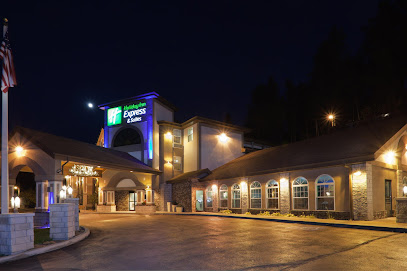
The Front Porch Restaurant and Bar
Experience delightful dining at The Front Porch Restaurant & Bar in Keystone - perfect for families after exploring Mount Rushmore!
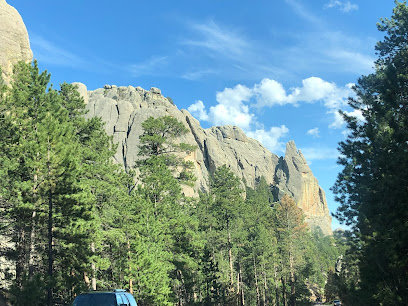
Carvers' Café
Experience delightful dining with breathtaking views at Carvers' Café near Mount Rushmore National Memorial.
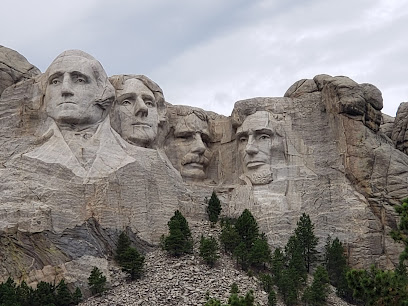
Grapes & Grinds
Experience the best of Keystone at Grapes & Grinds - your go-to coffee shop with unique gifts and delicious treats.
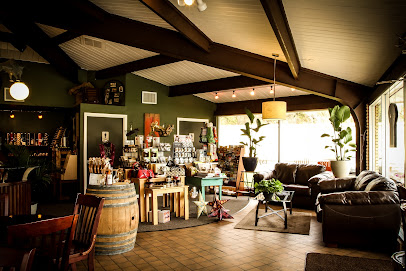
Quality Inn Keystone near Mount Rushmore
Discover comfort at Quality Inn Keystone near Mount Rushmore—your perfect base for exploring South Dakota's breathtaking landscapes.
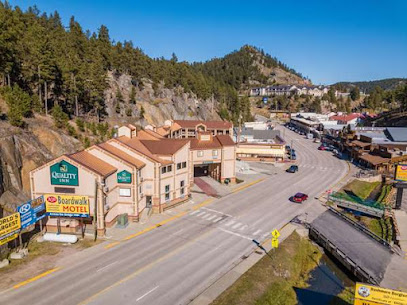
Laughing Water Restaurant
Experience delicious local cuisine amidst breathtaking views at Laughing Water Restaurant in Custer, South Dakota.
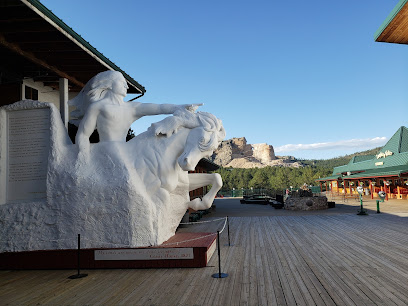
Stateline Casino & Heartland Grill
Discover gaming thrills and delightful dining at Stateline Casino & Heartland Grill in South Dakota – where fun meets flavor!
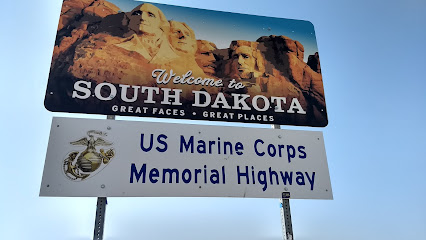
Dockside Grill
Experience delicious American cuisine at Dockside Grill with breathtaking views of Legion Lake in Custer, South Dakota.
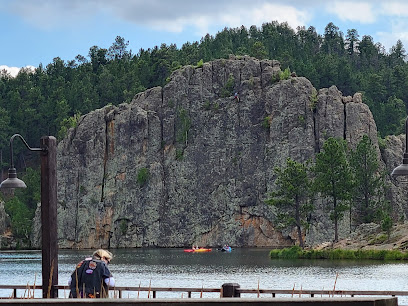
Markets, malls and hidden boutiques
The National Presidential Wax Museum
Discover the incredible lifelike wax figures of U.S. Presidents and historical icons at The National Presidential Wax Museum in Keystone, SD.
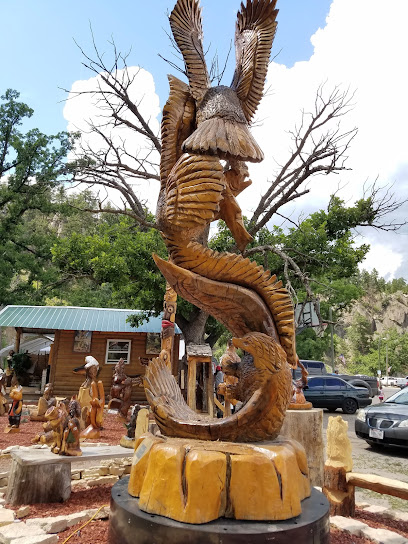
Mount Rushmore Gift Shop
Explore the Mount Rushmore Gift Shop for unique souvenirs that celebrate America's iconic monument and the stunning Black Hills region.

Boyds Antiques
Uncover unique vintage finds and immerse yourself in history at Boyds Antiques in Custer, South Dakota – a must-visit for treasure hunters.

Mount Rushmore Society/Mount Rushmore Memories Gift Shop
Explore unique gifts and support the preservation of Mount Rushmore at the Mount Rushmore Society Gift Shop in Rapid City, South Dakota.
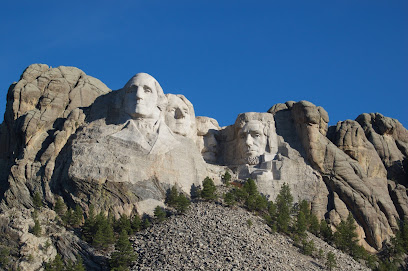
Mt Rushmore T-Shirts & Co
Shop unique Mount Rushmore-themed apparel and souvenirs at Mt Rushmore T-Shirts & Co in Keystone, South Dakota.

Bear’s Den Gift Shop
Explore the charm of Bear’s Den Gift Shop, offering unique souvenirs and local crafts inspired by the stunning Black Hills of South Dakota.

SD Gifts and Knives
Explore SD Gifts and Knives in Keystone, SD for unique souvenirs and local craftsmanship that capture the spirit of South Dakota.
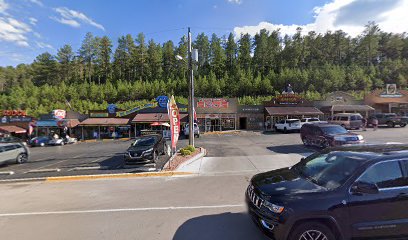
Essential bars & hidden hideouts
Powder House
Discover the perfect blend of comfort and culinary delight at Powder House Lodge in Keystone, South Dakota, near Mount Rushmore.

Baymont by Wyndham Keystone Near Mt. Rushmore
Experience the beauty of Mount Rushmore from the comfort of Baymont by Wyndham Keystone, your perfect hotel retreat in South Dakota.

The Front Porch Restaurant and Bar
Experience the charm and flavors of Keystone at The Front Porch Restaurant and Bar, perfect for families and tourists seeking a delightful dining experience.
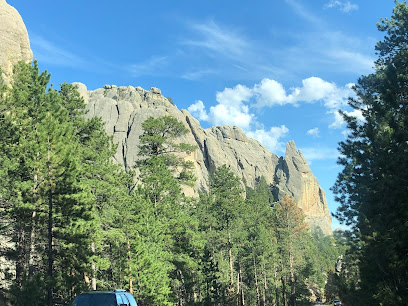
Grapes & Grinds
Discover the delightful fusion of coffee, candy, and local wines at Grapes & Grinds in Keystone, South Dakota – a must-visit for every traveler!
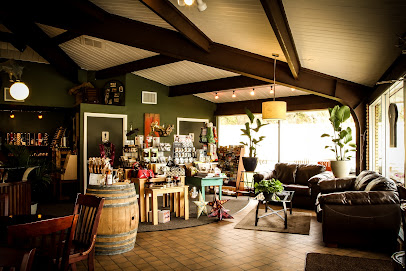
Laughing Water Restaurant
Experience the culinary heritage of Native American culture at Laughing Water Restaurant, near Crazy Horse Memorial, in stunning South Dakota.
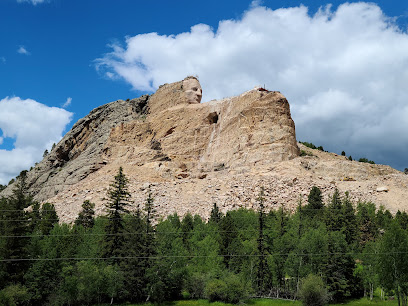
Stateline Casino & Heartland Grill
Discover the perfect blend of gaming excitement and delicious dining at Stateline Casino & Heartland Grill in South Dakota.

Local Phrases about Mount Rushmore National Memorial
-
- HelloHau
[how] - GoodbyeWíyanka yo
[wee-yahn-kah yoh] - YesHan
[hahn] - NoTaku
[tah-koo] - Please/You're welcomeIyápi yelo
[ee-yahn-pee yeh-loh] - Thank youPilámayaye
[pee-lah-mah-yah-yeh] - Excuse me/SorryHečhíŋ čha
[heh-cheen chah] - How are you?Hečhíŋ kiŋ čha wóuŋspe
[heh-cheen keen chah woh-uhn-speh] - Fine. And you?Wóuŋspe. Kaŋ lé kiŋ čha?
[woh-uhn-speh. kahn lay keen chah] - Do you speak English?Wóuŋspe ló
[woh-uhn-speh loh] - I don't understandIyápi kiŋ
[ee-yahn-pee keen]
- HelloHau
-
- I'd like to see the menu, pleaseMenu kiŋ hí čhaŋ, ičhášiče
[meh-noo keen hee chahng, ee-chah-shee-chay] - I don't eat meatWíyóiš waštéya
[wee-yoh-eesh wah-shday-yah] - Cheers!Oópa!
[oh-pah] - I would like to pay, pleaseWóuŋspe kiŋ waštéya, ičhášiče
[woh-uhn-speh keen wah-shday-yah, ee-chah-shee-chay]
- I'd like to see the menu, pleaseMenu kiŋ hí čhaŋ, ičhášiče
-
- Help!Wóuŋspe!
[woh-uhn-speh] - Go away!Kíčhiyakê!
[kee-chee-yah-kay] - Call the Police!Wóuŋspe kiŋ hí ičhášiče!
[woh-uhn-speh keen hee ee-chah-shee-chay] - Call a doctor!Wóuŋspe kiŋ hí waštéya!
[woh-uhn-speh keen hee wah-shday-yah] - I'm lostWóuŋspe kiŋ hí wičhákhiyakê
[woh-uhn-speh keen hee wee-chee-khah-kee-yah-kay] - I'm illWóuŋspe kiŋ wíyóiš
[woh-uhn-speh keen wee-yoh-eesh]
- Help!Wóuŋspe!
-
- I'd like to buy...Wóuŋspe kiŋ waštéya...
[woh-uhn-speh keen wah-shday-yah] - I'm just lookingWóuŋspe kiŋ hí čhaŋ
[woh-uhn-speh keen hee chahng] - How much is it?Tákú kiŋ héčhel waštéya?
[tah-koo keen hey-chehl wah-shday-yah] - That's too expensiveTákú kiŋ tópa waštéya
[tah-koo keen toh-pah wah-shday-yah] - Can you lower the price?Tákú kiŋ héčhel waštéya?
[tah-koo keen hey-chehl wah-shday-yah]
- I'd like to buy...Wóuŋspe kiŋ waštéya...
-
- What time is it?Táku kiŋ héčhel waštéya?
[tah-koo keen hey-chehl wah-shday-yah] - It's one o'clockHéčhel kiŋ máza
[hey-chehl keen mah-zah] - Half past (10)Máza hí Šápa
[mah-zah hee shah-pah] - MorningWówačhaŋ
[woh-wah-chahn] - AfternoonWówačhaŋ šká
[woh-wah-chahn shkah] - EveningWówačhaŋ ičhášiče
[woh-wah-chahn ee-chah-shee-chay] - YesterdayHáŋska kiŋ
[hahn-skah keen] - TodayHáŋska
[hahn-skah] - TomorrowHáŋska kiŋ héčhel
[hahn-skah keen hey-chehl] - 1Máza
[mah-zah] - 2Šápa
[shah-pah] - 3Núŋpa
[noo-ngpah] - 4Šúŋkakȟa
[shoon-kah-kah-gha] - 5Ptehíŋčala
[p-tay-ghn-chah-lah] - 6Zaptáŋka
[zahp-tahn-kah] - 7Sápa
[sah-pah] - 8Sápa šúŋkakȟa
[sah-pah shoon-kah-kah-gha] - 9Sápa núŋpa
[sah-pah noo-ngpah] - 10Máza šápa
[mah-zah shah-pah]
- What time is it?Táku kiŋ héčhel waštéya?
-
- Where's a/the...?Háŋska ičhášiče...
[hahn-skah ee-chah-shee-chay] - What's the address?Háŋska ičhášiče héčhel waštéya?
[hahn-skah ee-chah-shee-chay hey-chehl wah-shday-yah] - Can you show me (on the map)?Tákú kiŋ héčhel čhaŋ, ičhášiče?
[tah-koo keen hey-chehl chahng, ee-chah-shee-chay] - When's the next (bus)?Héčhel kiŋ tópa šká?
[hey-chehl keen toh-pah shkah] - A ticket (to ....)Wóuŋspe kiŋ hí waštéya (kiŋ ....)
[woh-uhn-speh keen hee wah-shday-yah (keen)]
- Where's a/the...?Háŋska ičhášiče...
History of Mount Rushmore National Memorial
-
In the early 1920s, South Dakota State Historian Doane Robinson conceived the idea of creating a massive sculpture in the Black Hills to promote tourism. His vision initially included carvings of western heroes like Lewis and Clark, Buffalo Bill Cody, and Sioux Chief Red Cloud. Robinson's persistent efforts eventually caught the attention of sculptor Gutzon Borglum, who would transform the concept into the Mount Rushmore we know today.
-
Gutzon Borglum, a renowned sculptor, was approached by Doane Robinson in 1924. Borglum proposed a grander vision: a tribute to four American presidents who symbolized the birth, growth, development, and preservation of the United States. The chosen figures—George Washington, Thomas Jefferson, Theodore Roosevelt, and Abraham Lincoln—were intended to represent the nation's principles and progress.
-
On October 4, 1927, President Calvin Coolidge formally dedicated the project, and the first carving began. Over 400 workers, including miners, sculptors, and laborers, took part in the project. They faced harsh conditions, using dynamite and precision tools to carve the 60-foot-high faces into the granite mountain. The work was both dangerous and demanding, but the team persevered.
-
The project faced numerous challenges, including funding issues, harsh weather, and Borglum's perfectionism. Despite these obstacles, significant progress was made. George Washington's face was completed in 1934, Thomas Jefferson's in 1936, Abraham Lincoln's in 1937, and Theodore Roosevelt's in 1939. Borglum's son, Lincoln Borglum, continued his father's work after Gutzon's death in 1941.
-
Mount Rushmore has been a symbol of American ideals and a major tourist attraction. However, it has also been a source of controversy, especially among Native American communities. The Black Hills, where the monument is located, are considered sacred land by the Lakota Sioux. The U.S. government's appropriation of this land and the construction of the monument have been viewed as acts of desecration and cultural insensitivity.
-
Today, Mount Rushmore National Memorial attracts over two million visitors annually. The site includes a museum, a walking trail, and an information center where visitors can learn about the history and significance of the monument. Despite its controversial aspects, Mount Rushmore remains an iconic symbol of American history and culture, offering a complex narrative that continues to evolve.
Mount Rushmore National Memorial Essentials
-
Mount Rushmore National Memorial is located in the Black Hills region of South Dakota, USA. The nearest major airport is Rapid City Regional Airport (RAP), approximately 33 miles away. From the airport, you can rent a car or take a shuttle service to reach the memorial. If driving from other parts of the United States, you can take Interstate 90 to Rapid City and then follow U.S. Highway 16 to Keystone, the closest town to Mount Rushmore.
-
The most convenient way to explore the area around Mount Rushmore is by car. Rental cars are available at Rapid City Regional Airport and in Rapid City. For those preferring not to drive, guided tours and shuttle services are available from Rapid City and Keystone. Public transportation options are limited, so planning your transportation in advance is advisable.
-
The official currency in the United States is the US Dollar (USD). Credit and debit cards are widely accepted at hotels, restaurants, and shops near Mount Rushmore. ATMs are available in Keystone and at various locations within Rapid City. It's always a good idea to carry some cash for smaller establishments or emergencies.
-
Mount Rushmore and its surrounding areas are generally safe for tourists. However, as with any travel destination, it's important to take standard precautions. Avoid leaving valuables in your car and remain vigilant in crowded areas. There are no specific high-crime areas targeting tourists near Mount Rushmore, but it's always wise to stay aware of your surroundings.
-
In case of an emergency, dial 911 for immediate assistance. The nearest medical facilities are located in Rapid City, which has hospitals and clinics. It is recommended to have travel insurance that covers medical emergencies. For minor health issues, there are pharmacies in Keystone and Rapid City where you can purchase over-the-counter medications.
-
Fashion: Do wear comfortable clothing and sturdy walking shoes, as you'll be spending time outdoors. Dress in layers, as the weather can change quickly. Religion: Do respect the cultural significance of the memorial; there are no specific religious customs to follow. Public Transport: Do plan your transportation in advance, as public options are limited. Greetings: Do greet people with a friendly smile or handshake. Locals are generally welcoming and happy to assist. Eating & Drinking: Do try local cuisine in Keystone and Rapid City. Don't litter; always dispose of your trash properly to help keep the area pristine.
-
To experience Mount Rushmore like a local, visit early in the morning or late in the afternoon to avoid large crowds. Take time to explore the Presidential Trail for unique views and photo opportunities. Check out the nightly lighting ceremony, which includes a patriotic program and the illumination of the memorial. Don't miss visiting other nearby attractions such as Crazy Horse Memorial, Custer State Park, and Badlands National Park for a more comprehensive Black Hills experience.
Trending Landmarks in Mount Rushmore National Memorial
Nearby Cities to Mount Rushmore National Memorial
-
Things To Do in Custer
-
Things To Do in Rapid City
-
Things To Do in Deadwood
-
Things To Do in Gillette
-
Things To Do in Pierre
-
Things To Do in Sheridan
-
Things To Do in Cheyenne
-
Things To Do in Laramie
-
Things To Do in Dickinson
-
Things To Do in Sterling
-
Things To Do in North Platte
-
Things To Do in Mandan
-
Things To Do in Bismarck
-
Things To Do in Fort Collins
-
Things To Do in Riverton








